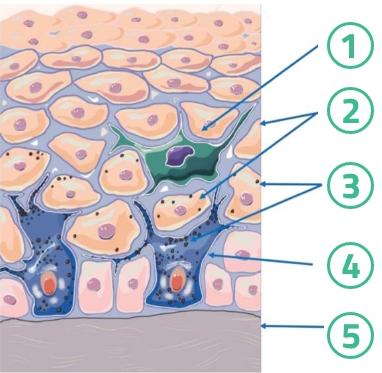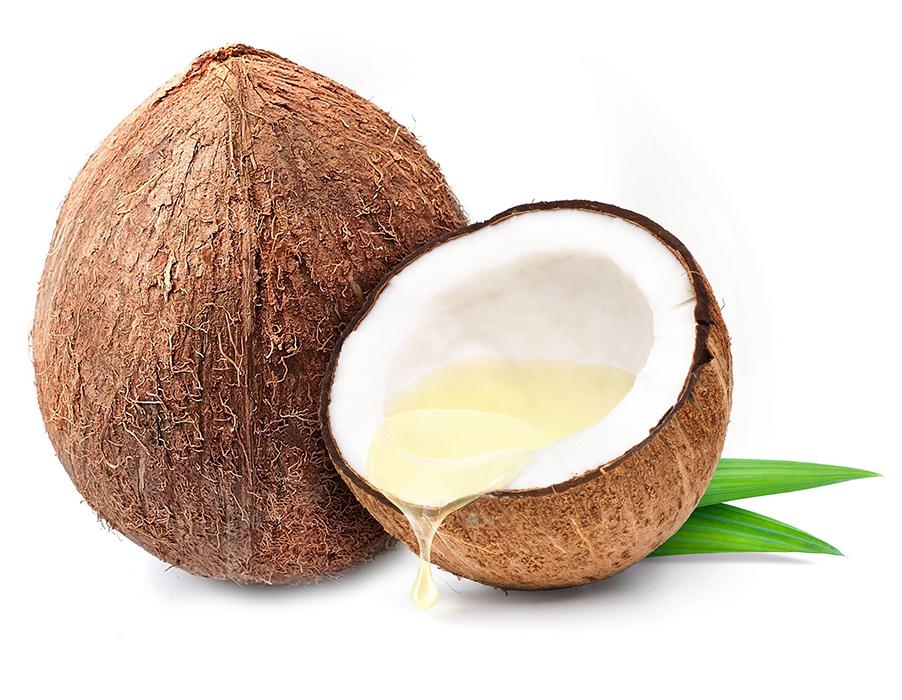Lifetime Money Back Guarantee 👍
Free Shipping On All Orders 🚚
100000+ Happy Customers Worldwide 🤗
📦 We Cover All U.S. Tariffs - No Extra Costs
The majority of vitiligo sufferers believe there is nothing that can be done for vitiligo.
Our most frequently asked question is “How does this product work?”
Understanding how Vitiligo Organics works requires an appreciation of how the skin is impacted by vitiligo, as well as the attributes of the medicinal ingredients both independently and in combination.
The skin is a complex organ, providing physical protection as well as controlling temperature, permitting touch sensation, absorbing (and reflecting) UV light and acting as the first line of defence in the immune system.
The skin is a complex organ, Our skin is divided into several layers, each including its own functional elements. In healthy skin, all of these elements work cohesively to protect us.
The outermost layer of the skin is called the epidermis, it consists of several layers and contains four major cell types

Skin cells are held together by desmosomes, and the cells are protected and fortified by keratohyalin and lamellar granules.
Keratinocytes make up ~ 90% of the population of cells. Keratinocytes develop from the bottom or basal layer of the epidermis and then migrate upwards over a period of about four weeks to the outer surface (stratum corneum) where they are shed. Both keratinocytes and melanocytes produce key proteins that regulate the growth, and multiplication of melanocytes and the production of melanin.
The melanocyte is a highly specialised, especially long-lived cell that produces melanin (natural skin pigment/colour) from the amino acid tyrosine. Within the lower layer of the epidermis, there are around 10x more keratinocytes than melanocytes; however, there are still around 1200 melanocytes per mm2 of skin, independent of race. The density of melanocytes in the skin depends mainly on exposure to ultra-violet radiation and factors secreted by keratinocytes and fibroblasts (functional cells found in the dermis, the skin layer beneath the epidermis).
Melanin made in the melanocyte is transferred to basal keratinocytes, with one melanocyte supplying up to 36 keratinocytes. Melanin has many properties that are beneficial to the body including UV light absorption and scattering, free radical scavenging, redox balance and ion storage. The melanocyte also secrets several signal molecules targeting not only keratinocytes but also important immune system skin cells.

Modulation of the adaptive immune response
Primary cellular components of epidermal barrier
Comprising of melanosomes for ultraviolet protection
The origin of melanin production
Involvement in the immune response, inflammatory damage and wound healing
Keratinocytes and melanocytes are necessary for normal, healthy skin function and colour. Disruption to one or both of these cell types can result in imbalance and a cascade in stresses and dysfunction. Unlike keratinocytes, the natural renewal of melanocytes is rare, and as a consequence, any loss in function or cell death leads not only to prolonged periods of depigmentation but also biochemical skin dysfunction.
Vitiligo is an autoimmune disease with highly visible symptoms of skin depigmentation. The depigmentation results from melanocytes loss. Langerhans cells (immune cells) are thought to play a major immunological role in vitiligo(21). Imbalance in the normal interactions between keratinocytes, melanocytes, and Langerhans cells is thought to initiate the depigmentation.

It is known that a multitude of natural biochemical pathways are disrupted when vitiligo is diagnosed, including
In some cases, this is accompanied by in addition to an influx of Langerhans cells(24), thought to be involved in active spreading vitiligo(19).
Like other modern, pharmaceutical preparations, this medicine and its active ingredients are backed by science, including several human clinical trials.
Unlike some other products, it’s been designed to provide a wide-ranging and multifaceted approach to addressing several different, key aspects of the disease including
These combined activities can help to normalise skin biology and to restore normal, healthy pigmentation
Each of the active ingredients has different activities, each targeting complementary outcomes, providing a comprehensive approach to normalising skin function and pigmentation.

Psoralen is the principal bioactive component in the dried fruits of Cullen Corylifolium. Medical professionals will recognise this substance as being the base of some of the most effective pharmacological interventions for vitiligo (21).
Psoralen, like many other biologically active substances, also influences a number of biochemical processes. Its well-characterised actions include(28)
These attributes alone are often deemed to be sufficient for professional management of vitiligo; this ingredient’s activity is complemented by other, similarly powerful substances.

Barberry root (Berberis vulgaris) has been used for millennia(5) and across many different traditional medicine paradigms as a remedy for vitiligo. Modern science is now beginning to decipher how Barberry root bark influences skin health and promotes a more normal function. The root bark contains naturally occurring berberine at concentrations of up to ~7-12%(8).
Berberine is a potent phytochemical that has a wide range of therapeutic benefits(16) including immune-modulating and anti-inflammatory activities(34).
Most specifically it appears to have a role in
The biochemical pathways identified for Berberine’s activity are different to those exploited by Psoralen; providing a complementary therapeutic effect.

Thymoquinone is widely regarded as being the biologically active component of Nigella Sativa.
Thymoquinone is likely to have a dual action in the remediation of vitiligo
A recent human-clinical trial(27) conducted in 2019 demonstrated that a cream containing Nigella sativa resulted in statically significant re-pigmentation in the hands, face and genital region of 47 men and women with vitiligo after 6 months of use, and was considered to be especially suitable for use on delicate skin.
An earlier double-blind randomised human clinical trial(13) compared the effects of Nigella sativa and Fish Oil in resolving the symptoms of Vitiligo. Nigella oil was found to be more effective, with the Vitiligo Area Scoring Index reducing from 4.98 to 3.75, with pronounced improvements in the upper extremities, trunk, head and neck after 6 months of use.
As is the case of Psoralen and Berberine; Thymoquinone utilises different inter and intra-cellular processes and different biochemistry in effecting its antioxidant and stimulatory effects. The combination of three distinct types of pharmacologically active substances in this natural medicine provides a sound basis for re-establishing balance across a wide range of processes that are dysfunctional in vitiligo affected skin.

Unlike the other actives that specifically target the metabolic pathways directly associated with vitiligo, virgin coconut oil serves to nurture, condition and normalise overall skin health.
The oil has emollient, occlusive and rehydrating properties. This ensures that the biologically active components of Cullen (Psoralea) Corylifolium, Berberis Vulgaris and Nigella Sativa are maintained close to the skin, and presented in an environment where there is sufficient biologically available moisture to facilitate their uptake and utilisation.
Monolaurin, a derivative of the coconut oil constituent lauric acid, demonstrates antimicrobial activity against some dermal pathogens, such as Staphylococcus aureus, Staphylococcus epidermidis, and Candida albicans(18). A clinical trial published in 2008(32) demonstrated that compared to Virgin olive oil, virgin coconut oil reduced skin infection and inflammation after 4 weeks of application.
Studies show that the antioxidant components of virgin coconut oil
Other studies demonstrate that it has anti-inflammatory, analgesic, and antipyretic activities; and helps to reduce acute(37) and chronic inflammation(29). A randomised double, blind clinical trial showed that topical application of virgin coconut substantially improved skin health and barrier function in children with stressed and inflamed skin.

Vitiligo Organics is well known and trusted vitiligo medicine for over a decade. It is listed in the Australian Register of Therapeutic Goods, having satisfied the requirements for purity, quality, safety, and effectiveness. It is manufactured in TGA licensed facility, by qualified and authorised professionals, using ingredients and processes that have been validated and verified. TGA is a similar regulatory authority in Australia as FDA in the United States.
Every aspect of the Manufacturing and Quality Control is carefully managed, from the chemical fingerprint identity verification of all the herbs, through to the manufacture, product testing and packaging processes. Following the latest science, we source every ingredient for the highest possible quality and efficacy. No compromise to the quality and unique scientific formulation makes Vitiligo Organics extremely effective.
Vitiligo Organics is one of very few, authentic medicines that takes a comprehensive, multifaceted science-based approach remedying the symptoms of vitiligo; and readdressing what are considered to be some of the underlying causes and consequences of the disease. We don’t claim to have all the answers, but we sincerely believe that this product can and does help reversing the symptoms of vitiligo; and that both tradition and modern scientific evidence support its use.
We noticed you're visiting from Australia. We've updated our prices to Australian dollar for your shopping convenience. Use United States (US) dollar instead. Dismiss